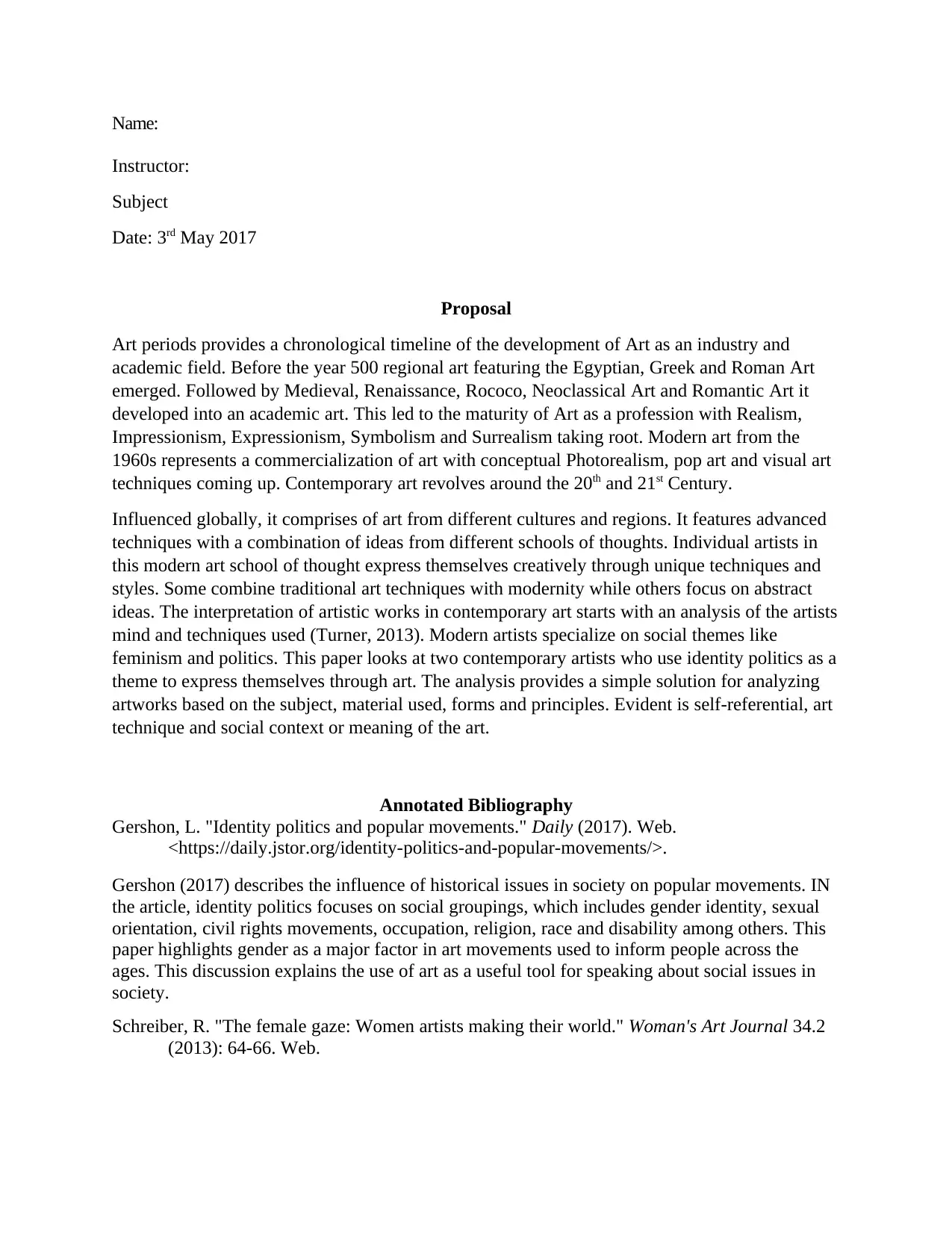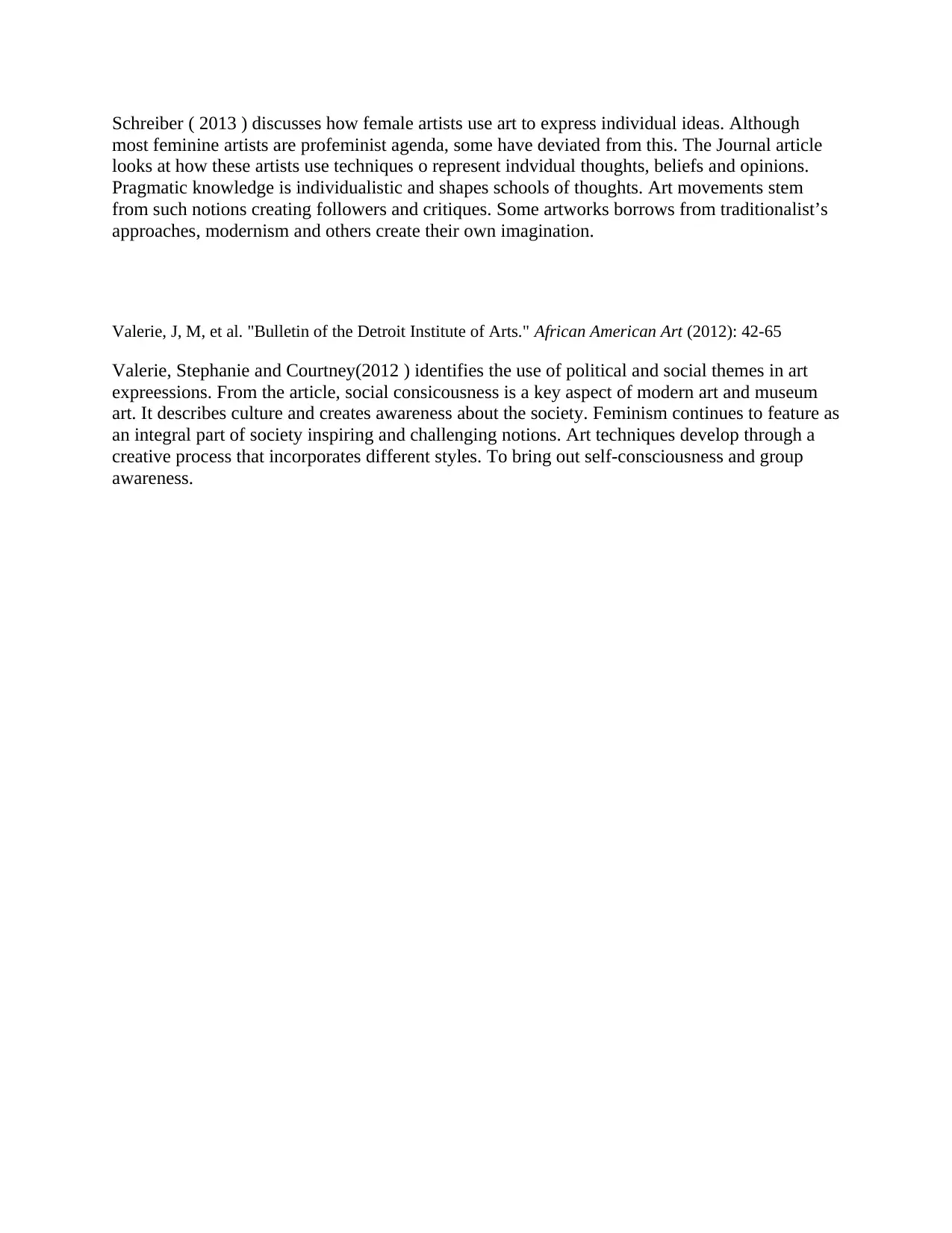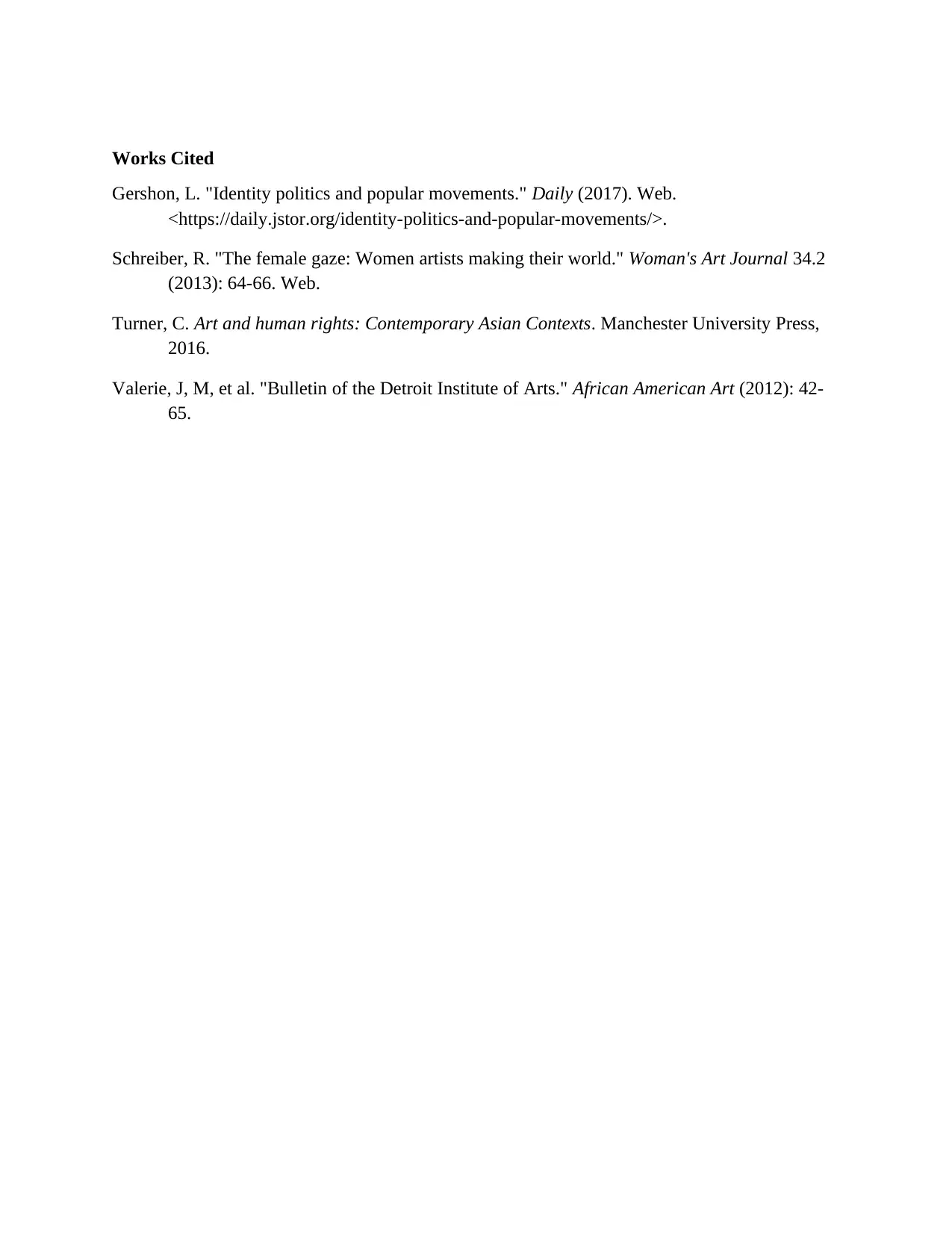Visual Arts Report: Contemporary Art, Identity Politics, and Artists
VerifiedAdded on 2021/06/15
|3
|709
|340
Report
AI Summary
This report provides an analysis of contemporary art, exploring its evolution and the influence of identity politics. It begins with a chronological overview of art periods, from ancient to modern, highlighting key movements and their characteristics. The report then focuses on contemporary art, emphasizing its global influence, advanced techniques, and the expression of individual artists through unique styles. The core of the analysis examines how two contemporary artists utilize identity politics as a theme in their work, offering a framework for analyzing artworks based on subject, materials, forms, and principles, with an emphasis on self-referential art, technique, and social context. The report includes an annotated bibliography of relevant sources and a list of cited works, providing a comprehensive understanding of the topic.
1 out of 3







![[object Object]](/_next/static/media/star-bottom.7253800d.svg)